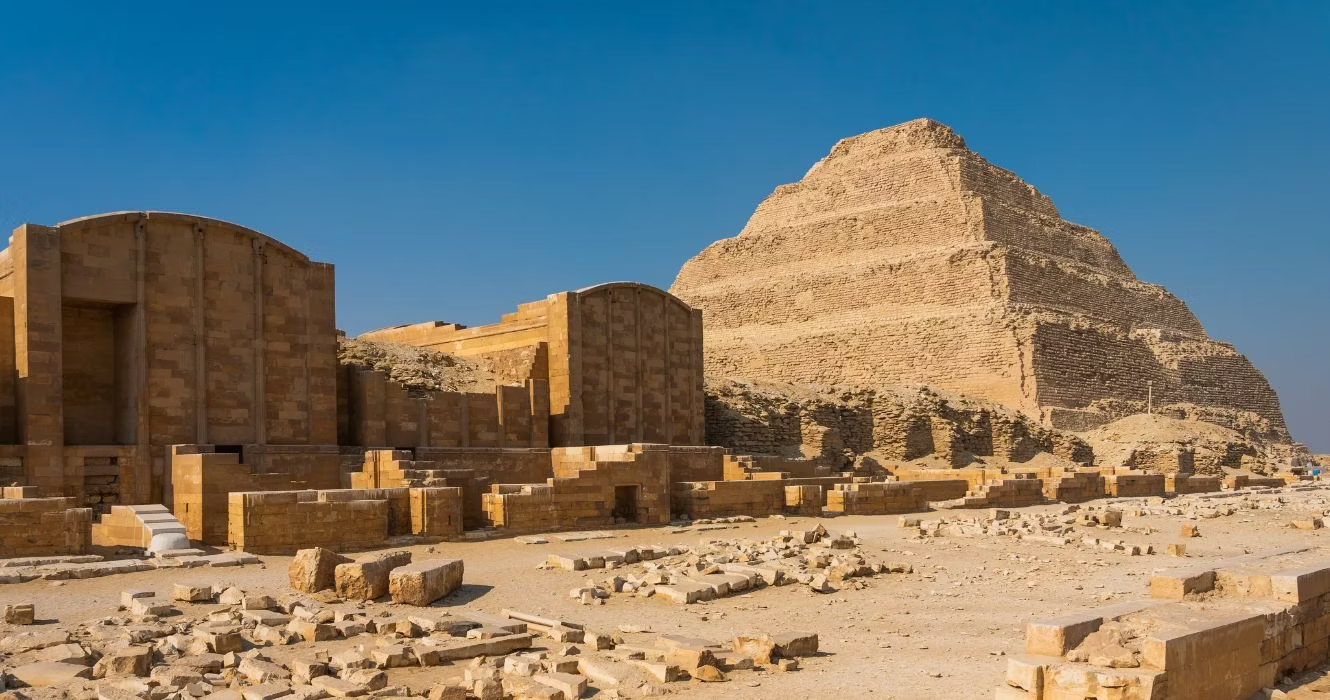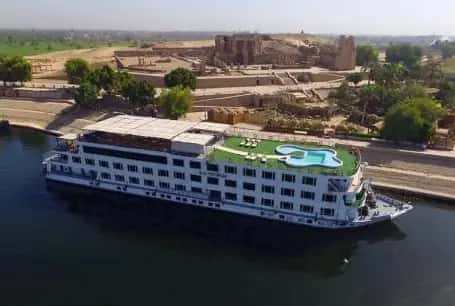
Saqqara, about 30 km south of the Egyptian capital, includes a funerary site that houses a large number of tombs and mastabas, in which the step pyramid of Djoser stands out as the oldest of those found so far. This was built by Imohtep in 2770 BC, an architect deified by the Greeks as Aesculapius, who had the idea of superimposing several mastabas, giving the work its characteristic shape. In addition to this, a series of accessory pyramids in various states of conservation populate the desert area.
This area includes the largest archaeological site in the whole country and historically one of the most relevant, given that all the main pharaonic dynasties are represented in it. If Memphis was in fact the capital of the Ancient Kingdom, Saqqara was the royal necropolis at least until the III dynasty and continued to be so for about 3000 years after the advent of Giza and Thebes like other necropolises. At least 17 pharaohs have been buried in the area.
Before moving on to the topic of the ancient cemetery of Memphis, we will ask you to check the Egypt offers as a pleasant invitation to our customers to book a classic Egypt tour in Cairo and luxor and Aswan by taking a Nile cruise and then a special visit to the red sea such as Marsa Alam , Marsa Matrouh , Sharm El Sheikh and many other archaeological sites of a very rich historical value
The ancient cemetery of Memphis, the resting place of dozens of pharaohs and their families, administrators, generals and sacred animals, covers an area of 7 kilometers in the western desert above the cultivated area of the Nile valley . The name probably derives from Sokar, god of death. The pharaohs of the Old Kingdom were buried inside the 11 major pyramids, while their subjects in the hundreds of smaller tombs.
If you want to visit the ancient kingdom of Memphis, you can check our Egypt travel offers where you can find several packages for Christmas and New Year in Egypt and Nile cruise offers and Easter in Egypt and honeymoons .
Most of the area, with the exception of the step pyramid, was buried in sand from Roman times, when it fell into disuse, until the mid-nineteenth century, when Egyptologist Auguste Mariette discovered the Serapeum . In 1979 it was inscribed on the UNESCO heritage list.
The most recent discovery is from July 2018, when a mummification laboratory with five mummies in their sarcophagi was exhumed.
The step pyramid of Djoser (or Zoser), is undoubtedly the most famous in Saqqara. It rises in six mastabas (truncated pyramid burials) of decreasing size. Built in the 27th century BC by the architect Imhotep for the third dynasty pharaoh who bears the same name as the pyramid. It is the oldest monumental structure carved into stone in the world. Nowadays the pyramid is closed, it is forbidden to visit it inside, but contemplating it from the outside is still a breathtaking sight.
Many of the pyramids in this area were built in economically troubled times, so the non-valuable materials have not stood the test of time. In addition to the aforementioned pyramid of Djoser, an architectural masterpiece, ten other pyramids remain in various states of conservation, some of which are open for visits. The most interesting of these is certainly the pyramid of Teti, pharaoh of the sixth dynasty, whose sarcophagus still remains in the burial chamber.
The Saqqara area is also home to an impressive array of tombs and mastabas, including the mastaba of Kagemni, the chief judge of Teti, and the mastaba of Ti, the overseer of the pyramids at Abusir . What is particularly interesting about the latter tomb is that its reliefs and friezes have been carefully restored and are considered one of the best preserved examples of Old Kingdom art. Also particularly interesting are the subjects represented which bring to light scenes from daily life in ancient Egypt , accompanied by hieroglyphic dialogues.
The Serapeum, as we have said, was the first element of the area to be brought to light, it represents another unmissable point of attraction in Saqqara. It was the underground burial chamber dedicated to the Apis bull. Raised and venerated in the Temple of Ptah in Memphis during their lifetime, sacred bulls were mummified after death and taken to the Serapeum to be buried in stone sarcophagi. This practice lasted for over 1,300 years, until 30 BC
To learn more about this and other Old Kingdom rituals, don't miss the Imhotep Museum, located right at the entrance to Saqqara. The five halls of this must-visit building showcase some of the site's most interesting finds, including the wooden coffin of Imhotep himself, the oldest royal mummy ever found, and a reconstruction of the library by French architect Jean-Philippe Lauer . Lauer is famous precisely for having dedicated his life to excavating and restoring the treasures of Saqqara.
YOU Can visit Egypt by choosing one of our EGYPT TOUR PACKAGES
“In my opinion, I believe a good writer makes content easy to read, and entertains the reader, making comprehension effortless.
By Kate Clark
Sail the nile between Luxor and Aswan onboard MS Mayfair Nile cruise and don't miss out on the best travel experience in ...
$ 699 | Per Person

Nile Premium Cruise: Sail the Nile between Luxor and Aswan aboard the Ms Nile Premium Cruise. Live the magic of the past ...
$ 599 | Per Person
.webp.webp&w=3840&q=60)
Book this 11 day Egypt tour package with a 7-day Nile cruise included, and visit the most emblematic tourist attractions ...
$ 1549 | Per Person